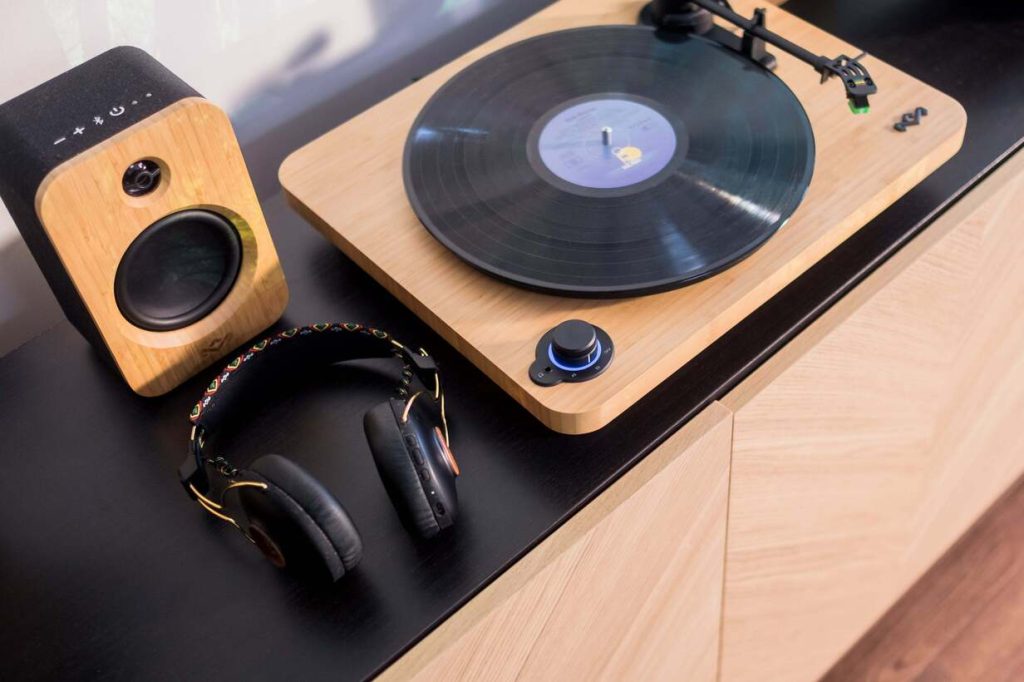
Nowadays, with music available at the click of a button people can hardly remember what they listened to in the morning. Relegated to museums by some – it's in times like these that a form of analog music has made a comeback.
Vinyl records are enjoying a renaissance with their crackling sound and chunky handling. Intriguingly, in the Hungarian language Vinyl shares a name with the material these records are made from. Called “bakelit”, the records were never actually made of the material, this is just a term that stuck in Hungarian colloquial language. The present revival of these records has been brought about not only by the nostalgia of older generations, but also by the young.
The question arises: why?
The obvious answer seems to be the "retro logic", but it is more complex than that: With the undeniable convenience and other advantages of digital media many feel that the limitless music library, immediate responsivity, and “skipping” are taking away from the magic of music.
This problem is remedied by the almost ritualistic nature of vinyl: from the iconic covers and flipping through the liner notes to the careful lowering of the needle. Vinyl requires listening with attentive ears: to some extent, it eliminates the focus on the hit tracks, as people listen to the more obscure ones in albums, which leads to the discovery of some "underrated" favorites.
The community experience associated with records is also an important part of the topic. Record stores, exhibitions, flea markets, and exchanges are spaces where music is not only exchanged in the physical, but also through the stories, recommendations, reviews, and personal experiences behind it. This is why analog formats bring music and the experience of listening to them to life.
However, the question arises: do they sound better? Or just different? After all, the dynamics and lack of distortion of digital formats provide a convenient and comfortable experience. Vinyl records are more unwieldy, but in return they offer sensuality, and it is this kind of atmosphere that attracts the many.
Vinyl is therefore not perfect, not cheap, nor the most practical or efficient. However, it offers an experience that is lasting and human.
In fact, it is a humane gesture towards music: it deserves more than being background noise.
Napjainkban a zene néhány kattintással elérhető, az ember alig emlékszik mit hallgatott reggel – egy ilyen időszakban tudott visszatérni az analóg zene egy formája, melyet néhányan már a múzeumokba kergettek.
A bakelitlemez (érdekesség, hogy a hanglemezek sosem készültek bakelitből, ez csak a magyar köznyelvben ragadt rájuk) a maga sercegős hangjával és darabos kezelésével együtt másodvirágzását éli. Ráadásul ezt a feltámadást nem egyedül a nosztalgiázó, idősebb generációk idézték elő, hanem a fiatalabbak is.
Adja magát a kérdés – miért?
Egy egyértelmű válasznak tűnik a “retró logika”, de ennél összetettebb dologról van szó: a bakelitek egy olyan időszakban találtak újra közönséget, amikor a digitális hordozóknak köszönhetően – melyek kényelme és további előnyeik elvitathatatlanok – sokan úgy érzik, a kimeríthetetlen zeneállomány, az azonnaliság és a skippelés elvesznek a zene varázsából.
Ezt a problémát orvosolja a bakelit már-már rituális jellege – az ikonikus borítóktól, a lemezfüzetek lapozgatásán át egészen a tű óvatos leeresztéséig. A bakelit megköveteli a hallgatótól, hogy ne fél füllel hallgassa: valamilyen szinten megszünteti a slágerorientáltságot, hiszen az albumok rejtettebb számait is végighallgatja az ember, amely így „underrated” kedvencek felfedezéséhez vezet.
A lemezekhez kapcsolódó közösségi élmény is fontos része a témának. A lemezboltok, kiállítások, bolhapiacok és börzék olyan terek, ahol a zene nem csak fizikai alapon cserél gazdát, hanem a mögöttes történetek, ajánlások, kritikák, személyes élmények is cserélődnek. Ezért az analóg formátumokkal a zene és zenehallgatás élménye is élővé válik.
Azonban felmerül a kérdés, hogy a zene is jobban szól-e? Vagy csak másképpen? Hiszen a digitális formák dinamikussága, torzítás nélkülisége egy kényelmes és kézenfekvő élményt nyújtanak. A hanglemezek körülményesebbek, de cserébe érzékiséget kínálnak, és ez a fajta légkör az, ami sokakat vonz.
A bakelit tehát nem tökéletes, nem olcsó, nem a legpraktikusabb és leghatékonyabb. Viszont egy olyan élményt kínál, amely maradandó és emberközeli.
Sőt, egy emberi gesztus is a zene felé: hogy az többet érdemel, mintsem háttérzaj legyen.
